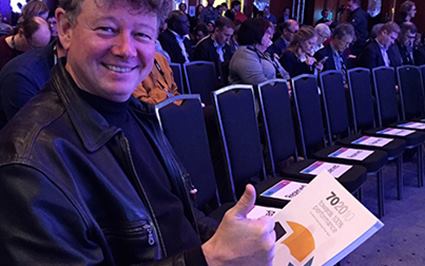70:20:10 towards 100% performance
The business and learning worlds are abuzz with 70:20:10.
Is it a theory for workplace learning? Is it a way of cutting down on training costs? Is it just a mantra to be followed slavishly? Is it simply old wine in new bottles, given that most learning and development (L&D) professionals believe they already combine learning and work? Why bother with 70:20:10 at all? And what’s the deal with this neat formula 70,20,10? People are suspicious of round numbers: surely the reality of learning and performance is much too complex to be defined in terms of simple ratios?
Despite all these questions and challenges, there’s a worldwide movement of L&D professionals who acknowledge the value of 70:20:10. Not because it’s a mantra, an ideology or an end in itself, but because it enables them to connect more quickly and effectively to what really matters: learning and performing at the speed of business. Learning isn’t just about providing formal solutions or classes and eLearning. By using 70:20:10 as a reference model, more and more L&D professionals are able to co-create value for their organisations. In doing so, L&D becomes more relevant and has greater impact.
70:20:10 has generated a lot of questions, criticism and hype, and that in itself is a good reason to write a book about it. But apart from correcting misconceptions, we want to share our knowledge and experience in using 70:20:10 with people who see learning as a way of improving productivity and gaining a competitive advantage. And who doesn’t want to do that?
The big question
The starting point of this book is this: Is it possible to improve the performance of people and organisations effectively by using the 70:20:10 reference model?
At first sight this may not seem an original question, because people have been trying for decades to measure the return and business impact of L&D against a range of approaches. However, much of L&D is stuck in a world offering catalogues of formal solutions comprising training and eLearning, so it makes sense to think about other ways in which learning and development professionals can add value for their organisations. We believe this is possible by using 70:20:10 as a model and by supporting both formal and informal learning solutions: around 70 percent learning by working, around 20 percent learning from and with others, and around 10 percent formal learning.
70:20:10 requires a change in mindset because, instead of focusing solely on learning, it shifts the emphasis towards performing. It highlights the original purpose of the human resources development profession, which is to help people and organisations to perform better. This doesn’t happen on its own. The paradigm shift requires L&D professionals to adopt a new set of roles because if you keep on with business-as-usual, of course nothing will change.
Hence the second question we attempt to answer in this book: How does implementing the 70:20:10 model affect the job of the L&D professional?
So the book is about how you can improve the performance of people and organisations by using 70:20:10, and how it changes the role of the L&D professional.
Who is this book for?
This book is for anyone involved supporting performance through learning, and anyone who is focused on building high performing individuals, teams and organisations.
The book will be invaluable for:
- L&D professionals
- People managers
- Staff members working with safety, quality and compliance issues
- Knowledge workers in general










